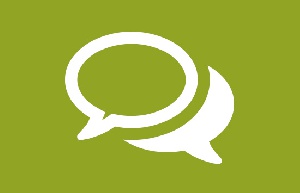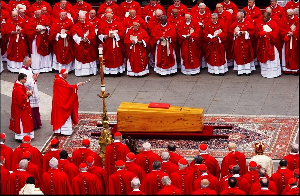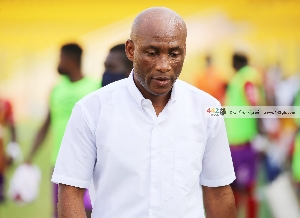HOW TO RESOLVE THE SECOND-TIER PENSION IMPASSE AND IMPROVE PENSION ADMINISTRATION IN GHANA
Written by Kwamena Essilfie Adjaye Theo Acheampong and Franklin Cudjoe all of The Ghana Growth and Development Platform, Current Issue Note 5, November 11, 2014
A. THE ISSUE/IMPASSE:
On 22 October 2014, twelve of Ghana’s labour unions — including public health, local government and education sector workers — out of eighteen autonomous national unions under the auspices of the Trades Union Congress (TUC) embarked on an indefinite strike to press home their demands over Government’s failure to pay their Tier 2 Pension Scheme contributions, and demanded full disclosure on the funds accrued in the scheme and control over selection of trustee for management of the funds.
The National Pensions Act, 2008 (Act 766) which became operational on January 1, 2010, established a new three-tier contributory scheme with the National Pension Regulatory Authority (NPRA) mandated to approve, regulate and monitor trustees, fund managers and custodians, and to provide overall policy advice on pension matters.
According to the Chief Executive of the National Pensions Regulatory Commission (NPRA), the amount accrued since the coming into effect of the new pensions law in 2010 is estimated at over GH¢1.6bn. The GH¢1.6bn breaks down into GH¢522m being contributions from private sector workers, originally paid to the Social Security and National Insurance Trust (SSNIT) and later transferred to the Bank of Ghana (BoG), GH¢490m being public sector workers’ contributions paid to the Controller and Accountant General’s Department (CAGD) and then transferred to the BoG, and investment income of GH¢600m from the two sources. This figure is far greater than the figure of GH¢440m that Mr. Haruna Iddrisu, the Minister of Employment and Labour Relations, indicated had been accrued in recent press briefings.
It has come to light that the Government selected Pension Alliance Trust (PAT) as the trustee for the tier two pension funds in 2012.
The Government has described the strike as “unlawful” and “unnecessary”, saying it contravenes the Labour Act (Act 651), and initially filed a suit asking the courts to declare the indefinite strike illegal and to seek an interpretation of the Pensions Act. The Government, however, subsequently indicated in various briefings that it was prepared to withdraw the suit and was ready to dialogue with the unions.
Also, on Thursday, October 30, the Government appealed to the Labour Unions to meet at the Labour Commission on Monday, November 3, to deliberate on ending the strike. However, before the court case could be called and the Labour Commission could meet, the Government went to court on Friday, October 31, and was granted an ex-parte application “ordering the twelve striking labour unions to return to work immediately."
In a bid to clear the confusion surrounding the issue, NPRA stated at a press briefing that the over GH¢1.6bn currently lodged in the Temporary Pension Fund Account (TPFA) at the BoG will be disbursed to trustees mandated to collect and manage the funds before year end 2014. It was added that the NPRA is deliberating with “Auditors, the Fund Administrators, SSNIT, Corporate Trustees and the Controller to ensure a smooth transfer of the TPFA to the Custodians of duly registered Occupational Pension Schemes.”
The strike by public sector workers has received wide media coverage and public support. Support has come from civil society groups, one of which, IMANI Ghana, has called for an investigation into attempts by the Government to impose PAT as the trustee of workers’ tier two pension funds.
On Monday, November 3, Dr. Omane Boamah, the Minister for Communication, held a press briefing at which he presented and explained Government’s actions and indicated that Government was awaiting interpretation of Section 129 of Act 766 by the courts.
Joy News reported on November 6 that it had sighted a report by the NPRA to Parliament in which it’s stated that the CAGD had “failed to transfer more than 200 million cedis of workers’ pension contributions” into the TPFA. It was also reported that contributions collected by the SSNIT between June and September 2014 had also not been deposited into the TPFA. Bank Transfer Advices (BTAs) to CAGD as on October 27, 2014 showed that the total contributions outstanding amounted to GH¢269,269,105.79, but this excluded contributions for August and September 2014, for which BATs have not been issued. Moreover, this amount does not include interest on the delayed and unpaid contributions.
When interviewed, the spokesperson for the Registered Public Sector Workers Forum, Mr. Reynolds Tenkorang, told Joy News that the revelation was not a surprise to workers, as some have wondered whether contributions were being transferred into the BoG account. Mr. Tenkorang therefore insisted that Government should be made to pay the 3% penalty on the GH¢269m it has defaulted in transferring for months, in accordance with the provisions of the Pension Act that there should be a penalty of 3% if an employer does not effect transfer of contributions within 14 days after the end of a month.
According to Mr. Daniel Aidoo Mensah, the consultant on who worked on the new pensions scheme and then served as the first acting Chief Executive of the NPRA, “there is no ambiguity about the law”, and that both the employer and employee need to collaborate to resolve the current impasse.
There have been developments on this impasse almost every working day, and this is expected to continue until the impasse is resolved.
B. THE GOVERNMENT’S (EMPLOYER’S) ARGUMENT:
The Government’s main argument is that, it, the Government should choose the trustee to manage the second tier pension funds of public sector workers, as it is the employer of public sector workers. As the Government is asking for the courts to give an interpretation of Section 129, then that section would have to be taken as the main one on which the Government bases its argument. In fact the Government has already chosen a trustee, PAT, as stated above.
In a Ministry of Finance and Economic Planning (MoFEP) letter to PAT, one could conclude that competitive bidding was used in the selection of PAT, as the term "competitive selection process" is used. But after checking with other approved and registered trustees this description has been called into question, as none had recollection of having read any advertisement of invitation for bids (which MoFEP, as a public entity, is expected to do).
C. THE UNIONS’ (EMPLOYEES’) ARGUMENT:
The main argument of the striking Labour Unions is that the Pensions Act gives employees the right to choose the trustee. The Labour Unions base this argument mainly on Section 141 of the Pension Act. Secondly, the Labour Unions argue that it’s unacceptable for Government to have selected PAT as the trustee without the participation of unions in the process.
The following is the reaction to the selection of PAT by the union whose members are directly affected:
1. The Civil and Local Government Staff Associations, Ghana (CLOGSAG) has strongly opposed the Government's selection of PAT to run the Tier 2 pension schemes of all workers on government payroll. 2. The CLOGSAG issued a statement on Thursday 22nd of November 2012 and copied the Ghana News Agency (GNA) about its dismay at the action taken by the Government. In its statement CLOGSAG stated that "Our initial observation is that this action by the Minister of Finance and Economic Planning, appointing a Trustee for Civil and Local Government staff, without taking cognizance of the fact that CLOGSAG has registered Hedge Pensions Trust, to manage its own pensions is unilateral and an imposition that is not backed by the tenets of the National Pensions Act 2008, Act 766 and the Labour Law." 3. The statement continued that "Mortgaging pension contributions of staff of Civil and Local Government Services to a private Trustee for five years is contrary to the intent and purpose of the National Pensions Act 2008, Act 766, as it violates the portability principle of the new pension scheme. Could this not be an avenue for the payment of judgment debt should the five-year contract be terminated?"
D. WHAT THE PENSION ACT SAYS:
To get to the bottom of the current impasse between the Labour Unions and the Government, it’s necessary to state relevant sections of the National Pensions Act, 2008 (Act 766), including Sections 129 and 141, which the Government and the Labour Unions, respectively, use as the primary ones that support their arguments that they have the right to select the trustee.
Sections 1 of the Act establishes “a contributory three-tier pension scheme” as follows: “(a) a mandatory basic national social security scheme; (b) a mandatory fully funded and privately managed occupational pension scheme, and (c) a voluntary fully funded and privately managed provident fund and personal pension scheme.”
Section 3 states the contributions as follows: “(1) An employer of an establishment shall deduct from the salary of every worker in the establishment immediately at the end of the month, a worker’s contribution of an amount equal to five and half per centum of the worker’s salary for the period, irrespective of whether or not the salary is actually paid to the worker. (2) An employer of an establishment shall pay for each month in respect of each worker, an employer’s contribution of an amount equal to thirteen per centum of the worker’s salary during the month. (3) Out of the total contribution of eighteen and a half per centum an employer shall within fourteen days from the end of each month transfer the following remittances to the mandatory schemes on behalf of each worker (a) thirteen and half per centum to the first tier mandatory basic national social security scheme; and (b) five per centum to the second tier mandatory occupational pension scheme.”
Section 1, stated above, clearly describes both tier-two and tier-three as “privately managed”. Furthermore, Section 4(2) states that “The occupational pension scheme, provident fund scheme, personal pension scheme and other privately managed pension schemes shall be managed by trustees approved by the Board.” Clearly, this is an unequivocal statement that the “Board” of the regulator, NPRA, not the Government, shall approve trustees for the management of the second and third tier schemes defined in Section 1.
In Section 98(1) of the Act, there is an explicit provision that “A contribution in respect of a member of a scheme vests in the member as accrued benefits as soon as it is paid to the approved trustees of the scheme.” Hence, the funds quite clearly belong to the members.
But a trustee must be registered: Section 129 (1) states that “An application for the registration of an occupational pension or provident fund scheme as an employer sponsored scheme may be made to the Board only by (a) a company which has been approved as a trustee or has applied for approval as a trustee; (b) two or more individuals who are approved trustees, or have applied for approval and at least one is an independent trustee; or (c) a company and one or more individuals.”
Section 141 states that: (1) The trustees of an occupational pension scheme shall ensure that within a reasonable period of the commencement date, arrangements are in place to provide for at least one-third of the total number of trustees to be member-nominated trustees, and implement those arrangements. (2) Member-nominated trustees are trustees of an occupational pension scheme who are (a) nominated as the result of a process in which the active members of the scheme are eligible to participate, and (b) selected by some or all of the members of the scheme.
Section 218 states about temporary pension fund accounts as follows: (1) From the commencement of this Act and before the licensing or registration of trustees, pension fund managers and custodians, every employer to whom this Act applies shall open a temporary Occupational Pension Fund Account with the Bank of Ghana. (2) Subject to sections 3 (1), (2) and (3) of this Act, the five per centum remittance to the second tier mandatory occupational pension scheme on behalf of the employee shall be lodged with the Bank of Ghana pending the licensing of trustees, pension fund managers and custodians.
The membership of the Board of the NPRA is stated in Section 8, and it includes “(g) two representatives of Organised Labour,” and “(i) one representative of the National Pensioners Association,” among the 11-member body. Section Section 35 states the membership of the Board of Trustees of SSNIT. It’s a 13-member body with “(d) four representatives of Organised Labour, (e) one representative of National Pensioners’ Association.” In other words, workers are represented on the governing bodies of both the NPRA and SSNIT. There are representatives of the Government too on both boards.
E. GGDP’S POSITION:
A trustee is registered by the Board (Section 129), and approved by the Board to manage second and third tier schemes (Section 4 (2)). As Section 129 states that registration can be done only by approved trustees or trustees waiting for approval, then it has to be concluded that approval comes before registration. But shouldn’t registration come before approval?
After approval and registration (or the other way round) the next step should be selection – but the Act does not specifically address selection. It does not address the selection of a particular trustee for a particular second or third tier scheme, therefore, the Act does not vest that power in the Government (employer) nor in the Labour Unions (employees).
In the absence of a provision on selection the next closest step is approval, Section 4 (2), and that is vested in the Board. Bearing in mind that Section 3 (1) states the second tier as “a worker’s contribution”, while (2) states the first tier as “an employer’s contribution”, and bearing in mind that the spirit of the Act with its three-tier structure seeks to empower the contributor to choose who manages his or her funds, the GGDP’s position is that the selection of the second tier trustee must be by the worker (employees and their unions), whereas the selection of the first tier trustee is by the state (the Government), but this has already been stipulated in the Act as the SSNIT.
In the circumstance, the GGDP is of the strong opinion that the Government cannot and should not unilaterally select the trustee to manage tier two pension funds. We cannot understand the following:
1. Why the Government wants to impose PAT as the sole trustee to manage the second tier pension funds of public sector workers. 2. Why the Government, through the BoG, is still keeping these funds in the TPFA, some four years since the commencement of the scheme.
In other words, it’s our strong opinion that the Government should not have unilaterally selected PAT as the trustee for the tier two contributions of public sector employees. It’s also our strong opinion that the impasse should be resolved quickly so that the funds in the TPFA can be transferred quickly to selected trustees to manage.
Concerns have been raised in some quarters about the need for the Government to retain part or full control of the tier two contributions or have a say in the choice of trustee on account of possible insolvency of the trustees. These concerns are warranted. But they do not and should not go to the extent of giving the Government the right to choose the trustee unilaterally.
Global best practice in the governance and administration of occupational defined contribution trust-based schemes dictate clear rules of engagement spanning risk management, investment objectives, asset classes and fund performance (security and liquidity of scheme assets), management of conflicts of interest situations, and scheme record keeping, among others. In a majority of these countries government has no direct say in the choice of trustees to manage these occupational pension schemes; instead, it acts as the regulator of pensions.
Thus, to the extent that the NPRA, the pensions regulator, is amply and institutionally empowered under the Act to gather information through regular surveys of scheme governance and forensic audits of mandatory disclosures or filings by trustees, then we are of the opinion that its regulatory capacity stringently to enforce risk management principles will be good. Risk management principles and techniques, which are widely applied within the banking industry worldwide, could be readily applied to risk management of pension funds – e.g., reporting, business line management and independent audit reviews.
As the NPRA has the regulatory capacity to ensure that trustees satisfy the provisions of the Act and the subsidiary regulations, the GGDP is of the considered opinion that trustees registered by the NPRA can manage tier two pension funds safely. It must be noted that trustees are first licensed by the Securities and Exchange Commission (SEC) before being registered by the NPRA. Licensing by the SEC and then registration by the NPRA ensure that the state (government) plays the critical role of deciding which companies are eligible and qualified to become trustees.
Furthermore, we are of the opinion that these tier two funds and indeed all other pension funds should be ring fenced, fully insured and backed up by a written statement of investment policies and principles, as happens in many other jurisdictions, so that even in the event of the trustee going into administration or declaring bankruptcy, the funds cannot be liquidated by the trustee's debtors or by government bailout.
F. RECOMMENDATIONS:
1. How to resolve the impasse:
The GGDP proposes the following towards resolution of the impasse:
a. The NPRA should immediately, without delay, be asked to produce an Investment report showing how much funds have been received, what it has been invested in, and what the return on investment over the period has been. b. The stewardship of the NPRA over the TPFA and the investment activities of the NPRA with respect to same should be subjected to immediate forensic audit. c. The NPRA should be ordered to announce a cut-off date for taking Tier 2 contributions into the TPFA by employers so that unified and proper accounting can be undertaken. d. The NPRA should immediately publicize the list of trustees it has registered so far, and it should henceforth periodically update the populace on how these trustees are meeting the legal and regulatory provisions of the Act. e. Trustees approved and registered by the NPRA should make presentations jointly to the Government (employer) and the Labour Unions (employees). Then the prospective trustees should be made to tender competitively. f. Then the employees should choose the trustee, as this is our interpretation of the Act. g. Thereafter, employers should be informed to make their mandatory Tier 2 (and voluntary Tier 3) contributions into schemes chosen by employees.
2. How to strengthen pension administration:
I. The Pensions Act: It’s imperative that the Act should be amended to remove the ambiguity that exists about who, employer or employee, has the right to select trustees for the second tier pension scheme. And the sequence of steps has to be clarified. Should it be approval before registration, as it currently stands, or registration before approval? Either way, the next step should be selection, with a provision added for selection.
II. SSNIT: In order to strengthen pension administration in Ghana in the long term, it was envisaged that the promulgation of the Act would have been accompanied with the restructuring of SSNIT, but this didn’t happen. This needs urgently to de done in two major respects:
A. Reduction in SSNIT’s Administrative Expenditure SSNIT should be restructured drastically to reduce its administrative expenditure from the historical level of about 25% of total contributions (of 18.5% since promulgation of Act 766, up from 17.5%) to levels of lower than 5% found in the countries considered to have the ‘best practice’ pension schemes, such as Switzerland, Chile and Singapore, which together are known as Swiss Chilanpore in the literature. In Singapore (and the US where the IRS collects for the Social Security Administration), it’s less than 1%. The optimal level for SSNIT which caters for its core function to collect, store (record-keep) and invest contributions, and pay benefits was found to be between 5% and 10% in a study for MoFEP. The major elements of the restructuring should be:
1. Reduction in the number senior staff. 2. Drastic reduction in the number of junior staff to a level adequate for efficient conduct of the core business of collection of contributions, record-keeping, paying of benefits, and investment with modern technology and methods.
The oath of secrecy sworn by members of the Board of Trustees must be abolished, as it prohibits members from informing their organizations exactly what happens at meetings, consequently undermining the effectiveness of their representation. Also, there must be a stipulation that the representatives of Organised Labour, the National Pensioners’ Association, and the Employers’ Association should be persons with relevant expertise, be they members or non-members of staff.
B. Increase in Investment Income SSNIT’s pool of funds should be invested in bonds and other long-term instruments so as to contribute to the development of a long-term capital market in Ghana. Such a revision of SSNIT’s investment portfolio and instruments will enable higher, positive real yields to be earned on investment. It should be totally unacceptable to workers and Ghanaians in general that SSNIT can report to have earned 12.09% and 5.60% return on investments in 2012 and 2011 on investment portfolio of GH?4.07bn and GH?3.42bn in 2012 and 2011, respectively, when a key government security like the one year note traded above 20% during those two years.
G. CONCLUSION:
This impasse has given Ghana the opportunity to review a matter of great national importance – the administration of pensions. Its resolution as the GGDP recommends will clarify and institutionalize the process of selection of second tier pension trustees and the strengthening of pension administration. We are of the strong opinion that this impasse about the selection of trustees can be amicably resolved.
It’s the strong opinion of the GGDP, based on our interpretation of the relevant sections which were quoted above, that employees (workers and their unions) should select trustees. But the selection process should be after presentations by prospective trustees to both employers and employees.
Once the impasse is resolved then funds should be transferred immediately from the TPFA to the trustees selected by employees for management.
The Pensions Act should be amended as soon as possible to remove the ambiguity about who does the selection of trustees for second tier pension schemes. And the sequence of steps – approval, registration, selection – has to be clarified.
The SSNIT must be restructured immediately to reduce drastically its administrative expenditure and to increase its investment income.
From a public policy perspective, the NPRA, as the regulator, should rigorously enforce provisions of the Pensions Act. The NPRA needs to ensure that no one uses or diverts workers' pension funds, whether it’s the Government, trustees, or the unions. Second tier pension commitments under the Pensions Act to workers should be respected and enforced promptly.
We would like this impasse to be resolved immediately.
Kwamena Essilfie Adjaye Theo Acheampong Franklin Cudjoe Interim Chairman Interim Vice-Chairman Member keadjaye@ghanagdp.org theo.acheampong@ghanagdp.org franklin.cudjoe@ghanagdp.org 057-511-3030
Opinions of Friday, 14 November 2014
Columnist: Cudjoe, Franklin
How to resolve the second-tier pension
Opinions














